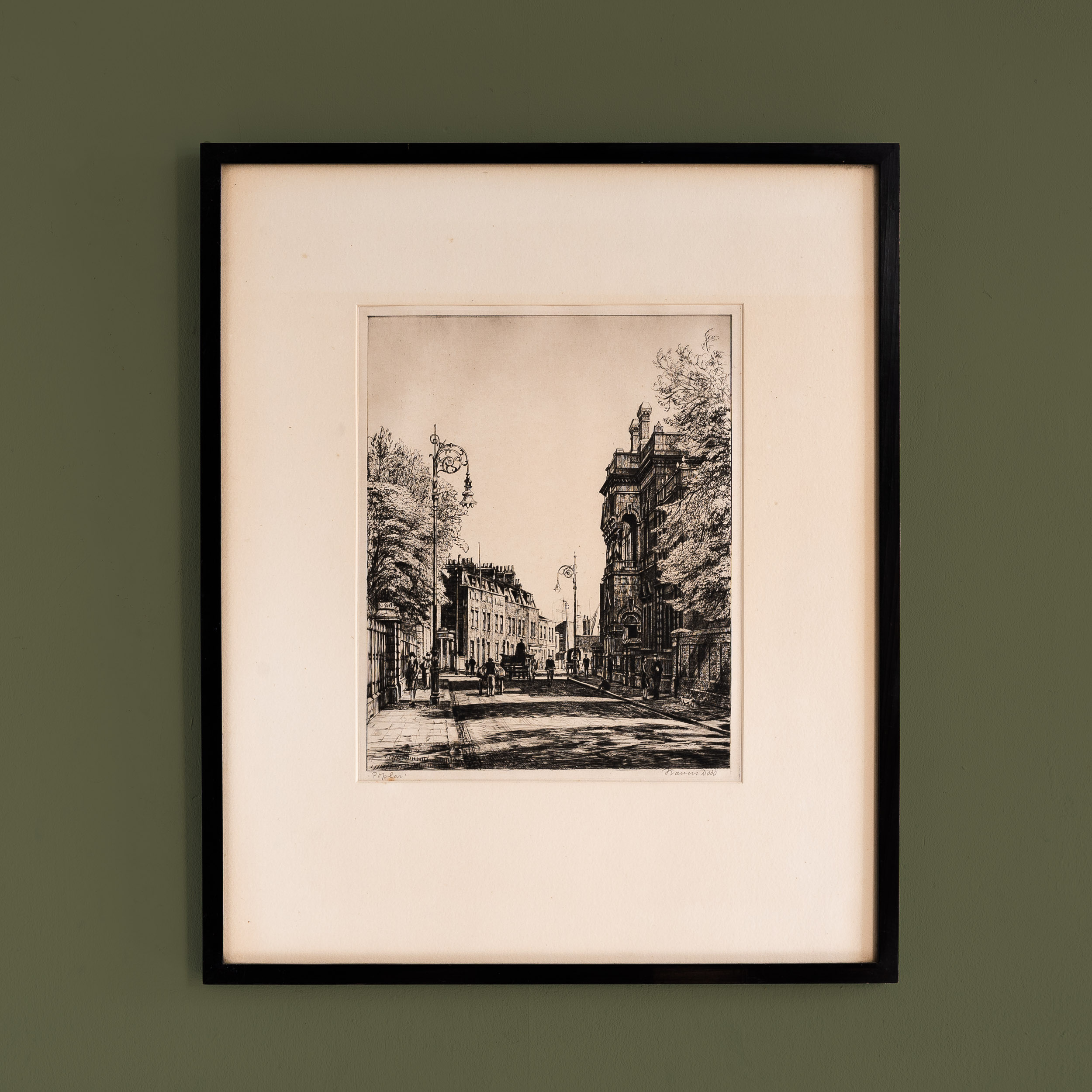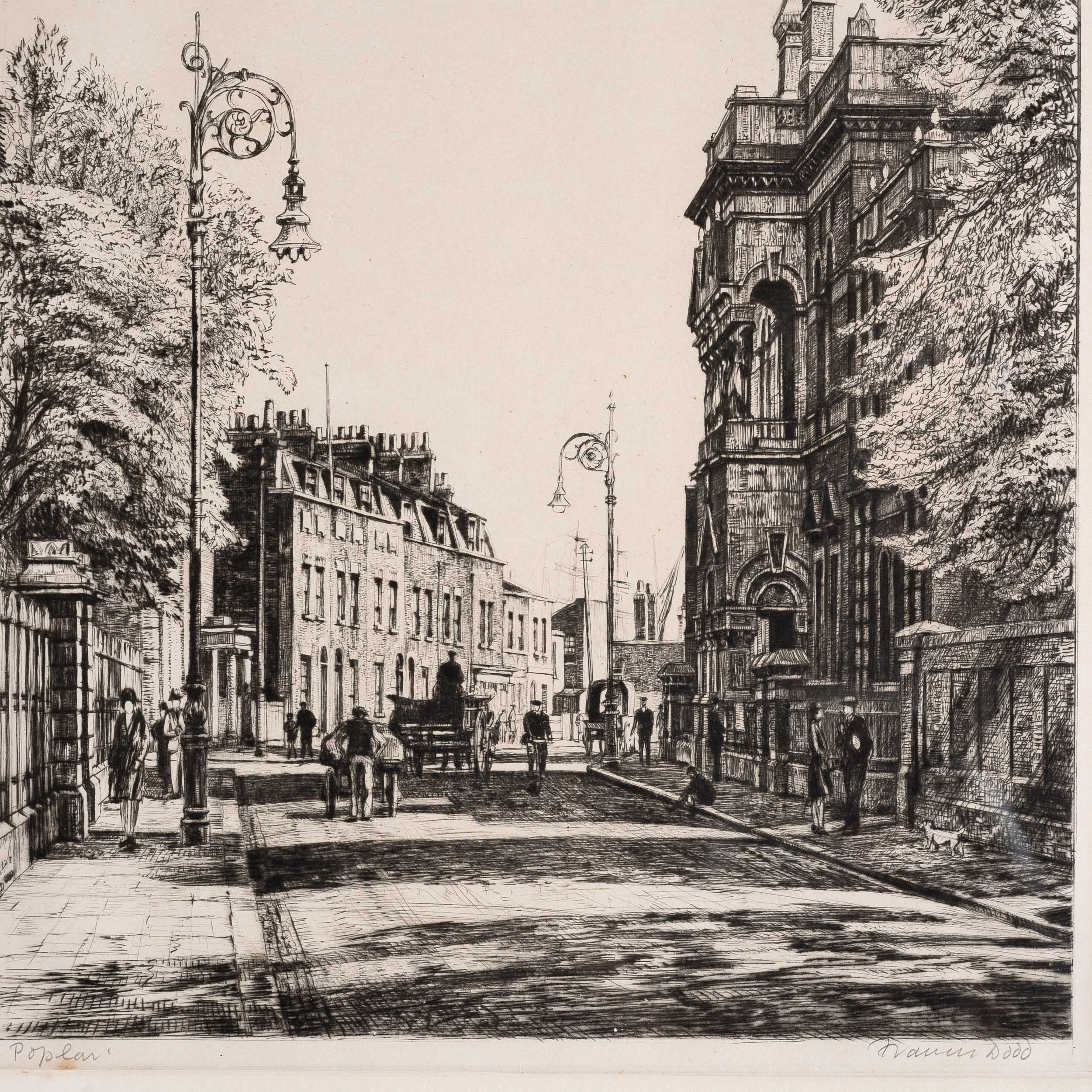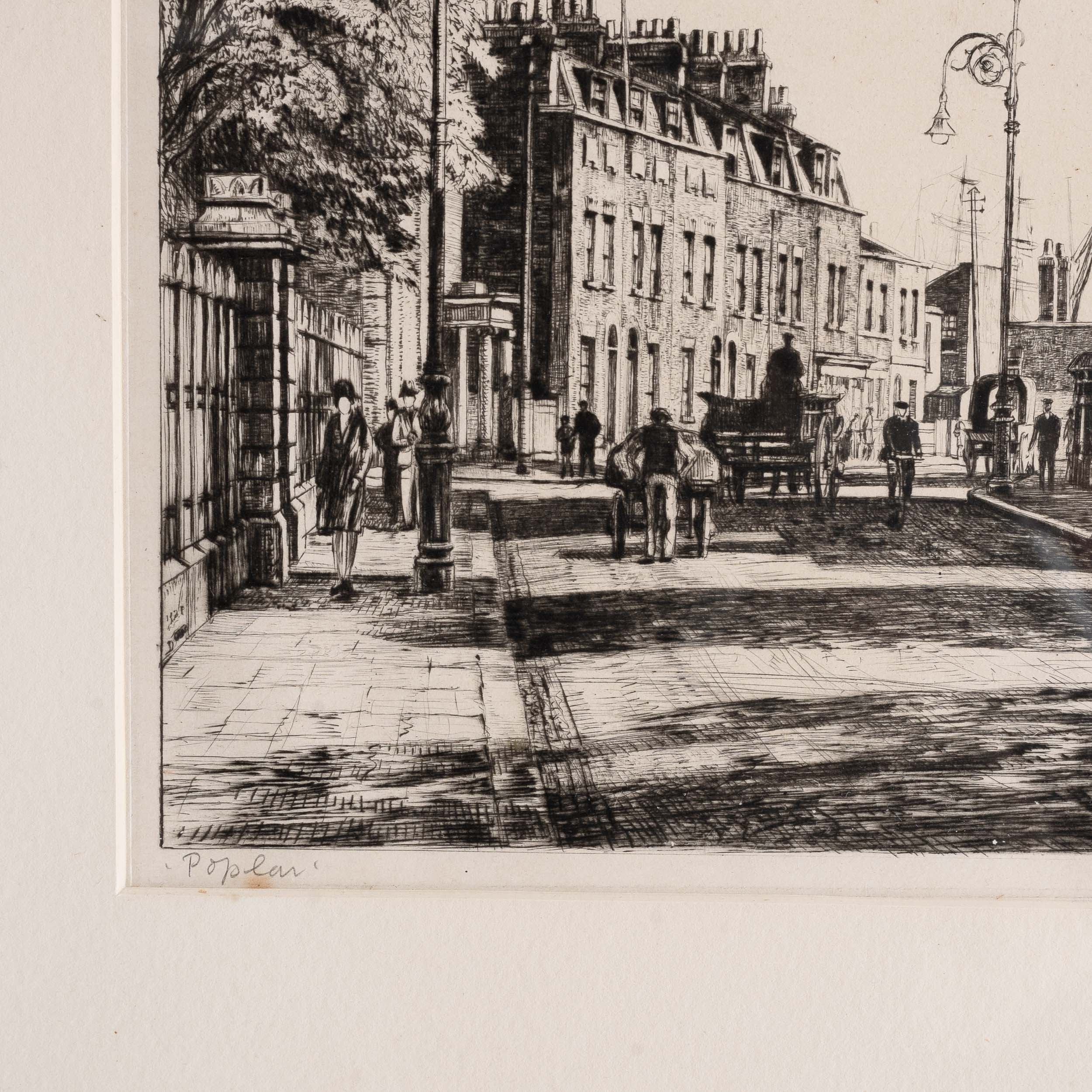Poplar
An original framed and mounted dry-point engraving by the artist engraver Frances Dodd RA showing Poplar Old Town hall on Newby Place in 1930.
Hand signed in pencil by the artist.
£650
In stock
Built between 1870 and 1871, Poplar Old Town Hall on Newby Place was the site of local governance in the London Borough of for a number of years before being replaced by larger premises on Poplar High Street. It later played a cherished role in the world of Music Hall and boxing.
It was set alight on September 7th 1940 by German incendiary bombs and, as noone could be found to unlock the doors, it burned to the ground. It was demolished and replaced by flats after the war.
Frances Dodd was an British portrait painter, landscape artist and printmaker who achieved his greatest acclaim between the wars. He trained at the Glasgow School of Art, alongside Muirhead Bone, where he won the Haldane Prize before travelling widely in Europe. After settling for a period in Manchester a friendship formed with Charles Holden (of London Underground Map fame) drew him south to the Capital. In London he earned his living through portrait commissions and on the strength of his work for the War Propaganda Bureau during the Great War,
He was appointed a trustee of the Tate Gallery in 1929, a position he held for six years, and was elected as an Associate of the Royal Academy in 1927 and a full Member in 1935.
Dodd lived at Arundel House (51 Blackheath Park) in Blackheath, London SE3 from 1911 until his suicide in 1949.
Recently Viewed Items
-
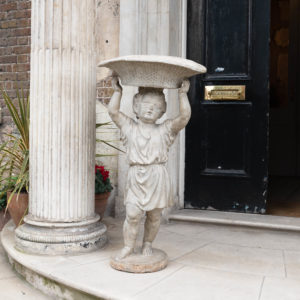
Composition stone figure of a young boy
£750 -
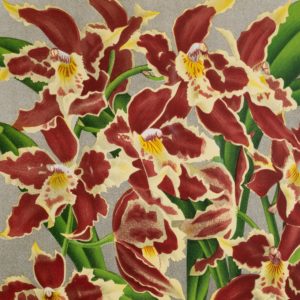
Linden Botanicals, Odontoglossum Crispum,
£175 eachLinden Botanicals, Odontoglossum Crispum,
L’Illustration Horticole, was a monthly horticultural review, founded in 1854 in Ghent, Belgium, by Ambroise Verschaffelt, a nurseryman who specialised in new plant introductions from South America. The lavish illustrations were produced by some of the very best botanical artists and lithographers – A. Goosens, P. De Pannemaeker and J. Goffart. The L’Illustration Horticole although founded by Jean Jules Linden (1817 – 1898) became a collaborative effort of many great horticulturists and field botanists of the day. Jean Linden in his own right was a renowned orchid grower and collector. Each monthly edition featured chromolithograph of botanical prints. Plants such as orchids, camellias, roses and leafy plants such as ferns and palm trees were represented. The magazine’s scope included pictures, descriptions, the history and culture of “the most remarkable plants,” new introductions, horticultural history, botanical expeditions, and accounts of the major expositions and of new works on botany and horticulture as well as garden descriptions and layouts.£175 each

